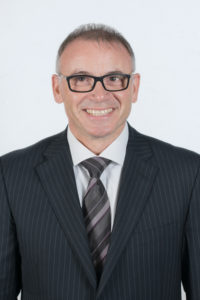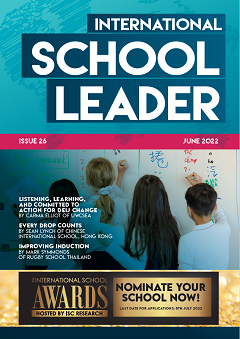By Mark Verde
On a global scale, the teaching of atomic theory is not commonly introduced into the curriculum until secondary school. With the support and guidance of specialist science duo, Ian Stuart, founder of Atomic School, and Ruben Meerman, physicist and science educator, Bangkok Patana School has introduced an atomic theory curriculum into its primary school. The aim is for students as young as four years of age to learn about the properties of atoms and molecules.
Introducing atomic theory
In September 2018, Ian visited us for the first time, loaded up with microscopes, periodic tables and sticky atoms, ready to introduce the primary school to atomic theory. Ian has a goal to bring atomic theory to every primary school in the world, opening up student learning to the concept by motivating, engaging and critically thinking about atoms, molecules and elements in the periodic table. He does this by providing opportunities for the students to investigate, experiment and understand the learning, having discovered that his son, at the age of seven, could understand atomic theory.
His vision married well with ours: to promote the status of science within the primary school and raise student and staff engagement in the subject. Ruben, also known as The Surfing Scientist, joined Ian and carried out workshops for all our primary school students, providing the fun of exploding gases, whilst also teaching students and teachers about the metabolic process of weight loss.
Ruben and Ian developed a scheme of learning across the primary school, which introduced children to atomic theory. The programme was designed to challenge the idea that younger students are unable to understand atoms and molecules or struggle with the concept. Since the inception of this project, Years 1, 3 and 5 students have been taught an explicit unit related to atomic theory that builds upon their prior knowledge and understanding. Adjacent year groups have then incorporated elements of atomic theory into their science curriculum, weaving it in as organically as possible throughout other concepts taught. Through this learning, students have been exposed to a language not considered commonplace within the curriculum until Key Stage 3 (age 11 upwards), such as neutrons, electrons, sodium chloride and atomic mass.
Making progress
The positive impact from Ian and Ruben led to the primary school building a skills-based science programme of learning based around the concepts of atomic theory for Years 1, 3 and 5, with a progression in knowledge and understanding of atoms, molecules, compounds and the periodic table.
On a return visit in 2019, they helped us, the staff, to deepen our understanding of these concepts, enabling us to interweave atomic theory into the curriculum and across all age phases. With the creativity and expertise of the Primary IT leader, Minecraft has also been used as a resource to open up further concepts related to atomic theory and engage the students at an even deeper level.
A key feature to the success of introducing this concept into the primary school was the use of a concrete resource developed by Ian Stuart called Sticky Atoms. This resource allows students to create molecular structures made up of magnetic ‘atoms’ with their available covalent bonds. As student understanding develops, the resource can be used to create larger and more complex molecules, such as protein chains.
Research and understanding
The initiative resulted in our Leader of Learning and Curriculum, Carly Peart, pursuing her master’s dissertation on the subject. Her research identified studies by Haeusler and Donovan (2020) confirming our own findings: that primary age students are capable of learning about atomic theory and demonstrate a positive attitude towards science given the right framework, approach and resources.
Atomic theory is now embedded into our primary school science curriculum, starting in Foundation Stage (for 3- to 5-year-olds), where they explore our Sticky Atoms resource, ask simple questions and make comparisons through observations. In Year 1 (5- to 6-year-olds), key scientific language is introduced and the students begin to explore microscopes and build molecule models, and are introduced to the periodic table. The learning steadily progresses across each age phase, with our oldest primary students in Year 6 applying their knowledge of atomic theory to concepts such as electricity and the circulatory system.
Due to COVID-19, Ruben and Ian were unable to visit us in 2020 and 2021, but we remain in close contact. With their help and collaboration, along with Carly’s research of our practice, we hope to continue extending our students’ understanding and knowledge of atomic theory and embed these concepts into and across our primary curriculum.
 Mark Verde is Assistant Principal of Learning and Curriculum at Bangkok Patana School, Thailand.
Mark Verde is Assistant Principal of Learning and Curriculum at Bangkok Patana School, Thailand.
Subscribe to International School Leader Magazine for more!



